Dendrochronology (or tree-ring dating) is the scientific method of dating tree rings (also called growth rings) to the exact year they were formed in order to analyze atmospheric conditions during different periods in history.The peculiarities of the "scientific method" deployed by Dendrochronology is perhaps best understood by examining how this academic discipline handles Roman Times.
https://en.wikipedia.org/wiki/Dendrochronology
Early in the 1980s Dendrochronology adopted German chronologies for Roman Times.
This transformed Romano-British floating chronologies into concrete chronologies.
The dates of this curve remained unfixed until in 1980-81 the German chronologies compiled by Hollstein and Becker for Roman Times became available and it could then be dated to BC 73 to AD 209.The new concrete chronologies conveniently conformed to British History.
The Waterfront of Londinium - J Fletcher
London and Middlesex Archaeological Society - 33 - 1982
http://www.hobleysheroes.co.uk/images/Lamas-pdfs/33_QuayDates_LMS_82.pdf
http://www.hobleysheroes.co.uk/images/Lamas-pdfs/35_Dendro_LMS_84.pdfEnthusiasm for the freshly minted concrete chronologies encouraged Dendrochronology to extend their Romano-British chronologies forwards in time.
Roman Britain was the area of the island of Great Britain that was governed by the Roman Empire, from 43 to 410 AD.
https://en.wikipedia.org/wiki/Roman_britain
Londinium was a settlement established on the current site of the City of London around AD 43
https://en.wikipedia.org/wiki/Londinium
And backwards in time even though the techniques employed were "difficult and controversial".© London and Middlesex Archaeological SocietyTransactions Volume 36, 1985
The crossmatching of short oak tree-ring sequences and their absolute dating is a difficult and controversial process.After 20 years of enthusiastic expansion these concrete chronologies had more than a few problems because the enthusiastic expansion failed to span the [deemed] 4th century AD.
The number of rings found to be acceptable varies according to laboratory, but it is not usually less that 50.
Below this, the uniqueness of the ring pattern may be questionable.
However, a high proportion of archaeological wood samples submitted for analysis have fewer that 50 rings for example 61% of the the oak timbers from the Iron Age causeway at Fiskerton, Lincolnshire were short sequences.
If we were to ignore these samples, we would be losing a great deal of information and dating potential.
Experience has shown that the actual number of rings is less crucial to successful dating than the number of related samples.
For example, one sample with 30 rings is probably undatable, whereas several samples, all from the same context, might be datable.
The single 30-year pattern might not be unique, but several ring patterns can be crossmatched with each other, and with a reference or master chronology.
Dendrochronology and Roman London - J Hillam, R Morgan and I Tyers
London and Middlesex Archaeological Society - 35 - 1984
http://www.hobleysheroes.co.uk/images/Lamas-pdfs/35_Dendro_LMS_84.pdf
This meant their concrete chronologies had the decidedly unscientific privilege of being disconnected floating chronologies with fixed dates "covering 434 BC - AD 315".
For the historic period there is now a continuous sequence that runs from the present back to AD 404, and another from Roman contexts covering 434 BC - AD 315.Dendrochronology still favours these oxymoronic floating yet fixed Romano-British concrete chronologies and it's been decreed that "time will not be wasted" comparing Roman Times with medieval chronologies.
The latter is still reliant on cross-links with Ireland and Germany for its dating since no English tree-ring sequence has been found that spans the fourth century AD.
Both the 'Roman' chronology and the AD 404 to present-day sequence are represented by master sequences from many sites.
Guidelines on Producing and Interpreting Dendrochronological Dates
English Heritage - 2004
https://content.historicengland.org.uk/images-books/publications/dendrochronology-guidelines/dendrochronology.pdf/© Malaga BaySee: The Mystery of the Missing Oak Trees
Knowledge of the approximate date is used, not as prior evidence, but to save time during the crossmatching process.This is unfortunate because if their time wasn't so precious [or their mindset was vaguely scientific] then they would discover their concrete chronologies for Roman Britain mirror their medieval chronologies.
All the Roman timbers, for example, can be grouped together, and time will not be wasted in comparing Roman sequences against medieval chronologies.
Of course, if no date can be found in the Roman period, then the search will be extended to chronologies from other periods.
Guidelines on Producing and Interpreting Dendrochronological Dates
English Heritage - 2004
https://content.historicengland.org.uk/images-books/publications/dendrochronology-guidelines/dendrochronology.pdf/
From the perspective of the measurement year [labelled "14C Age CE"] there are two worrisome data gaps in the 1st millennium CE.Furthermore, if their time wasn't quite so precious they would also discover that by using "difficult and controversial" techniques to enthusiastically extend their Romano-British concrete chronologies from 434 BC to 315 AD they have created [over] 1,200 phantom years.
The smaller data gap beginning in 912 suggests the raw measurement year is precisely accurate at this point in the calibration curve because it aligns [to the year] with the Heinsohn Horizon as determined by the perihelion of Comet Halley.
The larger data gap where the calibration curve restarts in 743 is very suggestive of the first felling of mature oak trees after the Arabian Horizon in 637.
This interpretation of events is further reinforced by the observation that the pattern traced by the calibration curve during the first 712 years of the 1st millennium replicates the calibration curve pattern that ends around 1350.
See: Deranged Dating: IntCal13 and the Heinsohn Horizon
Moving back in time it becomes apparent that the slanted science of the radiocarbon calibration process begins to push back in the 1st millennium BC and rapidly accelerates to breath-taking levels that exceed minus 250 years.However, the concrete chronologies look like they're just the tip of the iceberg...
The combination of the pushed forward data during the 1st millennium AD and the data push back in the 1st millennium BC creates a conspicuous Pivot Point in the Irish Oaks Chronology at 470 BC.
In many ways this 470 BC Pivot Point is the defining feature of the Irish Oaks Chronology and the consensus calibration curve that controls the radiocarbon calibration process.
Unsurprisingly, the IntCal13 Northern Hemisphere Atmospheric Radiocarbon Calibration Curve published in 2013 contains a remarkably similar Pivot Point at about 465 BC.
See: Deranged Dating: The Slanted Science
The gap in the Hohenheim river oak chronology during the later part of the Hallstatt period exists even after 20 years of intensive field sampling, and is still unexplained.
On the one hand, continuous overlapping older oak sequences (and in the oldest part, pines) show a unique continuity of flooding events over the entire Holocene.
The exception to this is the lack of evidence for tree accumulation in river gravels in south-central Europe between 540 BC (the latest accumulation date from the Lahn River) and 382 BC (the earliest accumulation date of a series of subfossil trees at the Danube).
Because of this lack of evidence, a 10-yr gap in the subfossil river oak series occurs from 540 to 530 BC (see Fig 2).
An 11,000-Year German Oak And Pine Dendrochronology For Radiocarbon Calibration - Bernd Becker - Radiocarbon, Vol. 35, No.1, 1993, P.201-213
https://journals.uair.arizona.edu/index.php/radiocarbon/article/download/1560/1564
See: Deranged Dating
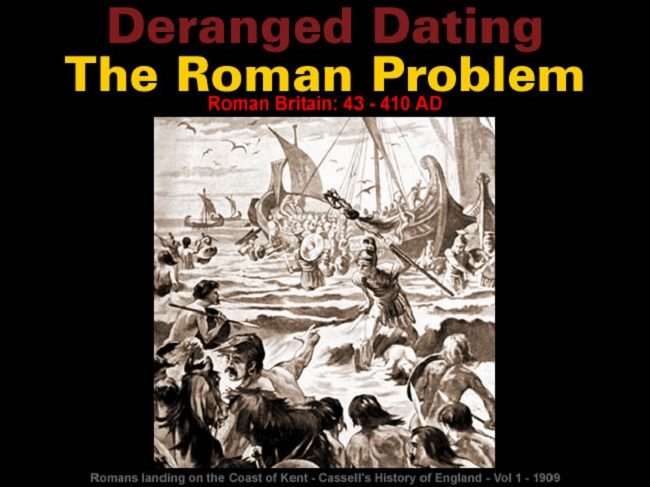

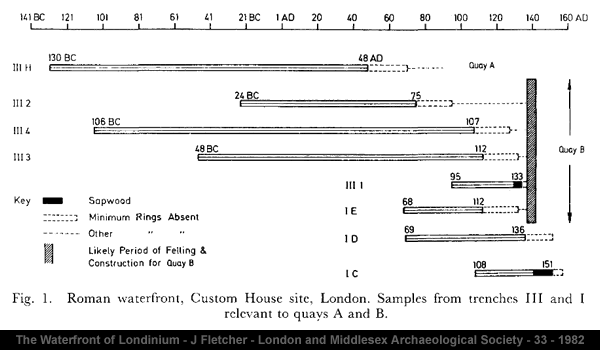
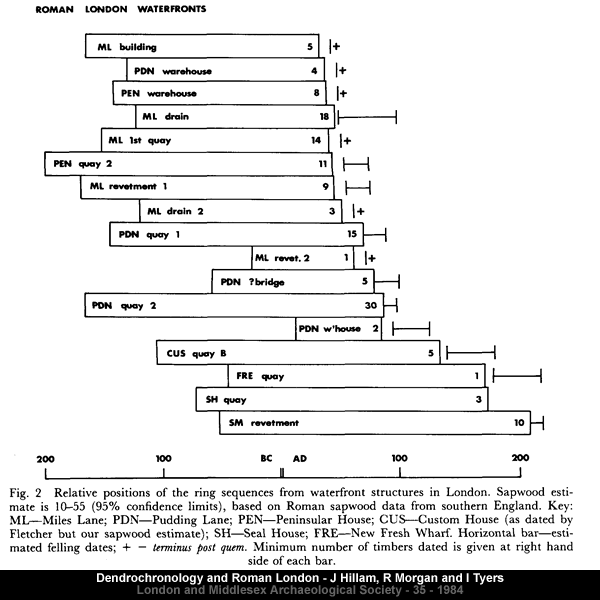
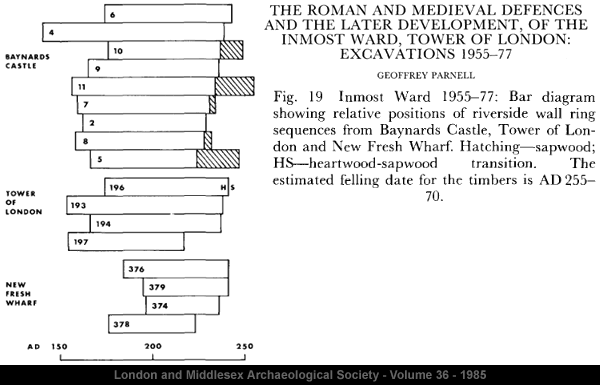
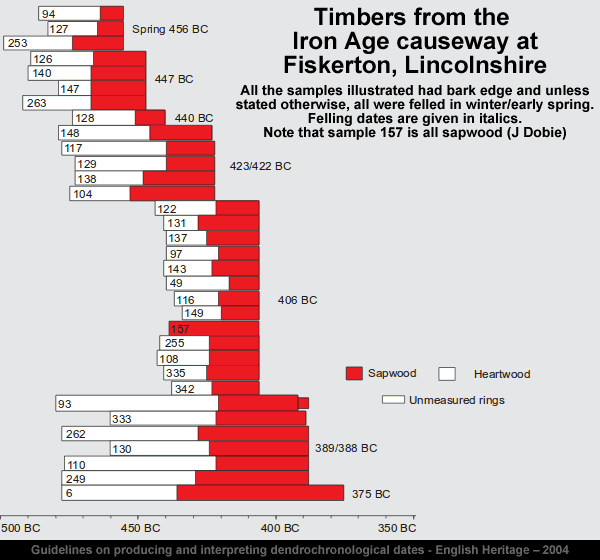
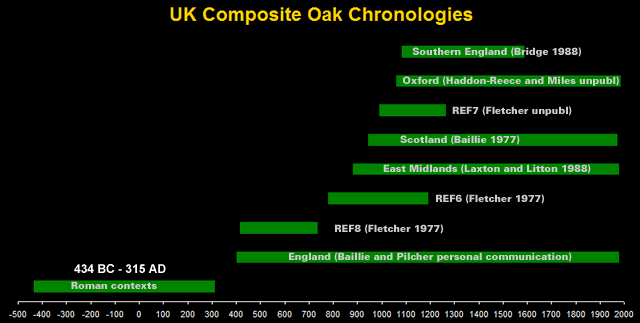
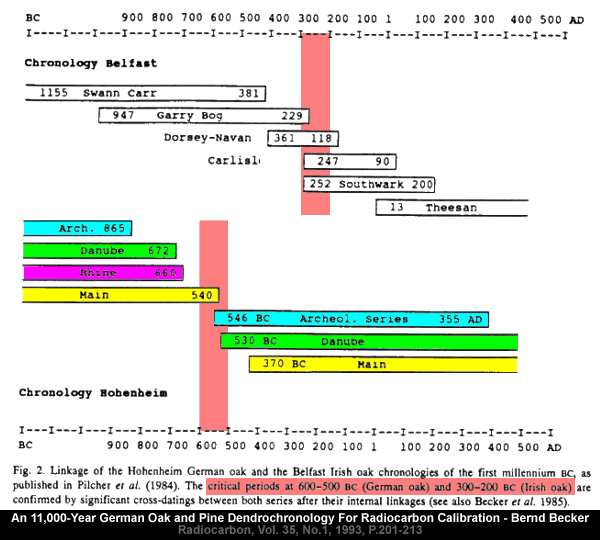



Reader Comments
Early Middle Ages
The Early Middle Ages or Early Medieval Period, lasting from the 5th to the 10th century CE, marked the start of the Middle Ages of European history. The Early Middle Ages followed the decline of the Western Roman Empire and preceded the High Middle Ages. The Early Middle Ages largely overlap with Late Antiquity.